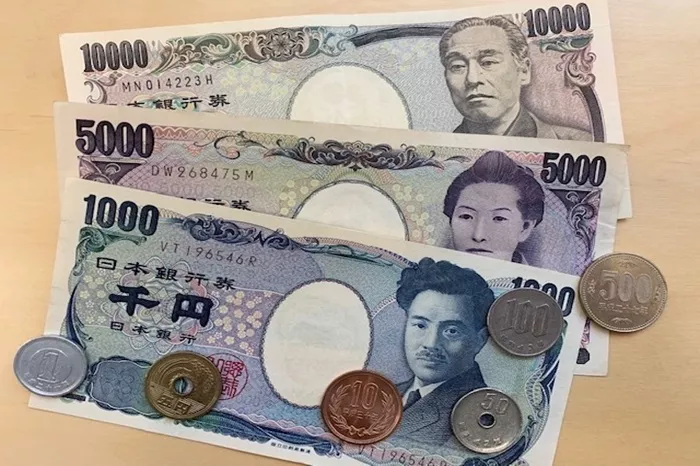The Japanese Yen (JPY) faced selling pressure on Friday following remarks from Finance Minister Katsunobu Kato, who warned that rising long-term interest rates could strain Japan’s fiscal health. This comment helped the USD/JPY pair recover slightly from the 149.30-149.25 range, marking its lowest point since December 3. However, significant depreciation of the Yen remains unlikely as market expectations shift toward further interest rate hikes from the Bank of Japan (BoJ).
The anticipation of hawkish moves from the BoJ has gained traction after a strong National Consumer Price Index (CPI) report, which reinforced expectations for sustained higher yields on Japanese government bonds (JGBs). This narrowing rate gap between Japan and other economies is expected to keep the JPY under pressure, although the recent downturn in the US Dollar (USD) might cap gains for the USD/JPY pair.
Inflation and BoJ’s Hawkish Stance Keep Yen in Focus
Minister Kato’s warning about the fiscal impact of rising JGB yields weighed on the Yen, overshadowing Japan’s better-than-expected CPI figures. Kato highlighted the potential for rising debt-servicing costs, which could hinder the country’s financial stability. In addition, BoJ Governor Kazuo Ueda acknowledged that higher long-term interest rates could increase corporate borrowing costs but emphasized that a stronger economy could support corporate profitability. He also signaled that the BoJ is ready to intervene in the market to mitigate any extreme market movements.
The latest inflation data showed that Japan’s headline CPI rose to 4.0% year-on-year in January, the highest level in two years. Meanwhile, the core CPI, excluding volatile fresh food, increased to 3.2%, its highest in 19 months. Additionally, the core CPI excluding both food and fuel costs saw a 2.5% rise, marking the fastest pace since March 2024. This surge in inflation has led to a more hawkish stance from BoJ policymakers, which, in turn, is likely to prevent substantial weakening of the Yen.
Wage Growth and Economic Outlook Support BoJ Rate Hike Expectations
Rising wage growth expectations in Japan suggest that consumer spending could pick up, reinforcing the belief that the BoJ may pursue more aggressive rate hikes than initially anticipated. This has supported the 10-year JGB yield, which remains near its highest point since November 2009. These factors should continue to support the Yen in the near term.
In contrast, Japan’s factory activity continued to decline in February, marking the eighth consecutive month of contraction, although at a slower pace. The au Jibun Bank Manufacturing Purchasing Managers’ Index (PMI) improved marginally to 48.9, up from 48.7 in January. Conversely, the services sector PMI rose to 53.1, signaling a resilient services sector.
US Dollar Weakness Limits Further USD/JPY Gains
The US Dollar reached its lowest point since December 10 on Thursday, driven by concerns over US consumer health after Walmart issued a weaker-than-expected sales forecast. Additionally, ongoing uncertainties about US President Donald Trump’s tariff policies and inflation risks have dampened market sentiment. Federal Reserve officials remain cautious about rate cuts in the face of persistent inflation, with some members, like St. Louis Fed President Alberto Musalem, highlighting the risks of stagflation. Others, such as Atlanta Fed President Raphael Bostic, see potential for rate cuts, depending on evolving economic conditions.
Market participants are now focused on upcoming US economic data, including flash PMIs, Existing Home Sales, and the revised Michigan Consumer Sentiment Index. These releases, along with comments from Federal Reserve officials, are likely to influence USD demand and, by extension, the USD/JPY pair.
USD/JPY Technical Outlook: Bearish Bias Continues
Technically, the USD/JPY pair broke through key support levels, including 151.00-150.90, and fell below the psychological 150.00 mark. This has opened the door for further downside movement. Oscillators on the daily chart remain in negative territory, reinforcing the bearish outlook for the pair. Any upward movement is likely to face resistance near 151.00, with potential for short-term selling opportunities.
If the USD/JPY pair manages to break above the 151.40 resistance level, it could trigger a short-covering rally, pushing the pair toward 152.00. However, the 200-day Simple Moving Average (SMA) near 152.65 may limit further gains. On the downside, 150.00 is expected to act as immediate support, followed by the 149.30-149.25 region, with the potential for the pair to test the December 2024 swing low near 148.65 if it continues to weaken.
Related topics:
U.S. Stocks Slide Amid Disappointing Jobs Data and Consumer Sentiment Decline
3 Amazing Australian Stocks to Buy and Hold Until 2030
McMillan Shakespeare’s Shares Drop 10% After Bell Potter Downgrade


